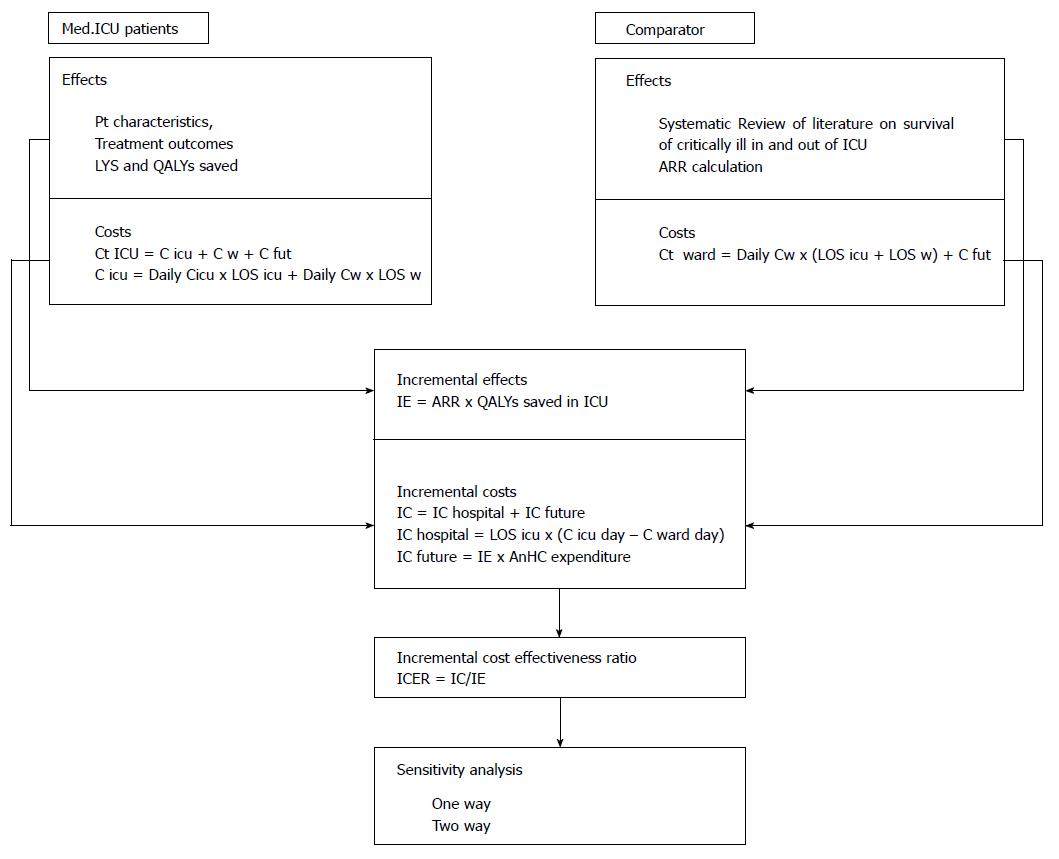Copyright
©The Author(s) 2016.
World J Crit Care Med. May 4, 2016; 5(2): 150-164
Published online May 4, 2016. doi: 10.5492/wjccm.v5.i2.150
Published online May 4, 2016. doi: 10.5492/wjccm.v5.i2.150
Figure 4 Overview of methodology used in the study.
The first phase was data collection for two patient cohorts, observed medical ICU patients and comparator cohort, which was represented by the same number of critically ill patients, with the same characteristics who would be treated on general hospital ward. Costs and treatment outcomes (effects) were recorded and calculated. In the second phase incremental analysis of costs and effects was done. The third phase gave the main incremental cost effectiveness ratio and in fourth a sensitivity analysis of cost effectiveness ratio to key model parameters was performed. Costs and effects were discounted at an annual rate of 3%. LYS: Life years saved; QALY: Quality adjusted life years; ARR: Attributable risk reduction for mortality with treatment of critically ill in ICU; Ct: Total costs; C icu: Costs of ICU treatment; C w: Costs of ward treatment; C fut: Future health care costs, after hospital release; Daily C icu: Average cost per ICU day; Daily C w: Average cost per general hospital ward day in internal medical department; LOS icu/w: Length of stay in the ICU or on general ward; IE: Incremental effects; IC: Incremental costs; AnHC expenditure: Annual health care expenditure per capita for Bosnia and Herzegovina; ICER: Incremental cost-effectiveness ratio. ICU: Intensive care unit.
- Citation: Cubro H, Somun-Kapetanovic R, Thiery G, Talmor D, Gajic O. Cost effectiveness of intensive care in a low resource setting: A prospective cohort of medical critically ill patients. World J Crit Care Med 2016; 5(2): 150-164
- URL: https://www.wjgnet.com/2220-3141/full/v5/i2/150.htm
- DOI: https://dx.doi.org/10.5492/wjccm.v5.i2.150









